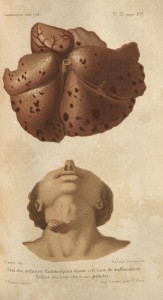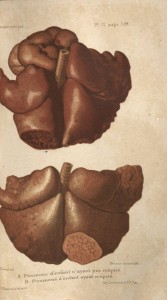This post is part of an ongoing series featuring items from the newly acquired Julio Mario Santo Domingo Collection.
Alexandre Lacassagne was a French physician and criminologist in the 19th-century. He founded the Lacassagne School of Criminology which was based in Lyon, France and focused on medical jurisprudence and criminal anthropology. He quite famously gave evidence in several criminal trials including that of Joseph Vacher, also known as “The French Ripper” who had a scarred face, an accordian, and a trademark white rabbit-fur hat. Vacher attempted to claim insanity from a rabid dog bite, but Lacassange testified that he was sane, thus he was found guilty and executed by guillotine in 1898.
Vacher attempted to claim insanity from a rabid dog bite, but Lacassange testified that he was sane, thus he was found guilty and executed by guillotine in 1898.
Lacassagne specialized in toxicology, was a pioneer in bloodstain analysis, and was an expert in identifying specific bullet markings from guns. This particular volume of Précis de médecine judiciaire explores various aspects of medical jurisprudence and includes these color plates that illustrate the appearance of organs due to specific conditions or perilous circumstances. For example the plate on the left is an example of the state of the thoracic organs in a case of suffication accompanied by the image of a furrow of the neck resulting from a hanging. The other plate displays the difference between two sets of lungs in an infant, one which is able to breath normally and one which does not.
To learn more about the early days of forensic medicine check out Précis de médecine judiciaire / par A. Lacassagne. Paris : G. Masson, 1878. RA1051 .L12 1878 which can be found at the Countway Library at the Harvard Medical School in Longwood.
Thanks to Alison Harris, Santo Domingo Project Manager and Joan Thomas, Rare Book Cataloger at Countway for contributing this post.


